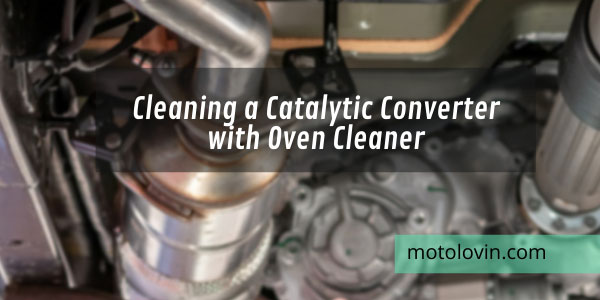Greetings, fellow car enthusiasts! In my years of journey as an automobile practitioner , I’ve encountered countless questions about catalytic converters and their care. Today, we address a topic that has sparked curiosity and debate – cleaning a catalytic converter with oven cleaner.
As we embark on this journey of knowledge and solutions, let’s explore the truth behind this method and understand the safest and most effective ways to care for our precious converters.
Cleaning a Catalytic Converter with Oven Cleaner – The Reality
Before we proceed, let’s address the burning question on everyone’s mind – can you clean a catalytic converter with oven cleaner? The short answer is NO. Using oven cleaner on a catalytic converter is not only ineffective but also potentially dangerous.
Understanding the Complexity of Catalytic Converters
Catalytic converters are intricate emissions control devices, precisely engineered to convert harmful exhaust gases into less harmful compounds.
Their internal structure, known as the catalyst, consists of precious metals like platinum, palladium, and rhodium.
These metals play a vital role in facilitating the chemical reactions that purify the exhaust gases.
The Risks of Using Oven Cleaner:
Oven cleaners are designed to tackle tough grease and grime found in ovens, and they contain harsh chemicals, including lye and caustic soda.
These chemicals are not compatible with the delicate precious metals inside the catalytic converter.
Using oven cleaner on a catalytic converter can lead to irreversible damage, rendering the converter ineffective and potentially necessitating expensive replacements.
The Consequences of Converter Damage:
A damaged catalytic converter can have serious implications for your vehicle’s performance and emissions compliance.
A compromised converter may lead to increased exhaust emissions, reduced engine efficiency, and even trigger the dreaded check engine light.
Moreover, driving with a damaged converter could result in failed emission tests, fines, and even render your vehicle illegal to drive in some regions.
The Safer and More Effective Alternative:
Instead of risking your catalytic converter’s health with oven cleaner, opt for safer and more effective cleaning methods.
There are specialized catalytic converter cleaners available that are specifically formulated to dissolve carbon deposits and contaminants, without harming the precious metals inside the converter.
These cleaners are designed to promote the longevity and efficiency of the converter, restoring its performance without causing damage.
Proactive Care for a Healthy Converter:
To keep your catalytic converter in optimal condition, consider these preventive measures:
- Use high-quality fuel to reduce the risk of impurities and deposits.
- Adhere to your vehicle’s recommended maintenance schedule, including regular engine tune-ups.
- Avoid aggressive driving habits and excessive idling, which can stress the converter.
- Monitor your vehicle’s performance and promptly address any engine-related issues.
- Be cautious of rough road conditions and avoid impacts that could damage the converter.
Conclusion:
While the allure of using oven cleaner may be tempting, it is crucial to resist the temptation and opt for safer and more appropriate methods to clean your catalytic converter.
The delicate precious metals within the converter demand our care and consideration.
By embracing responsible and informed care, we can ensure that our vehicles run efficiently, while also contributing to cleaner air and a more sustainable automotive future.
Let us take the journey of automotive ownership with knowledge, wisdom, and respect for the environment, so that every mile we drive becomes a testament to our commitment to responsible car care.
Happy motoring, and may your automotive adventures be filled with the joy of driving responsibly and making a positive impact on our planet!
